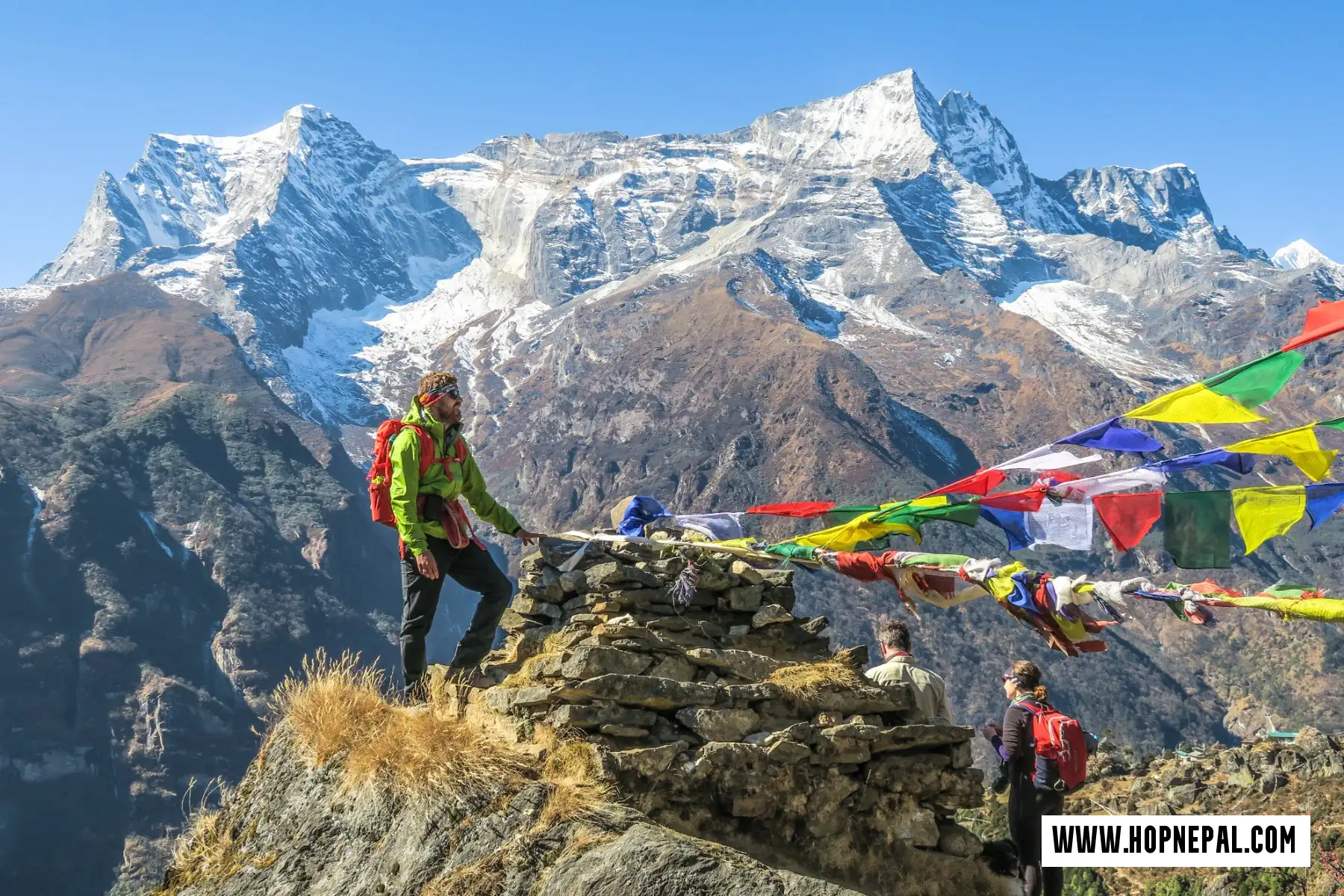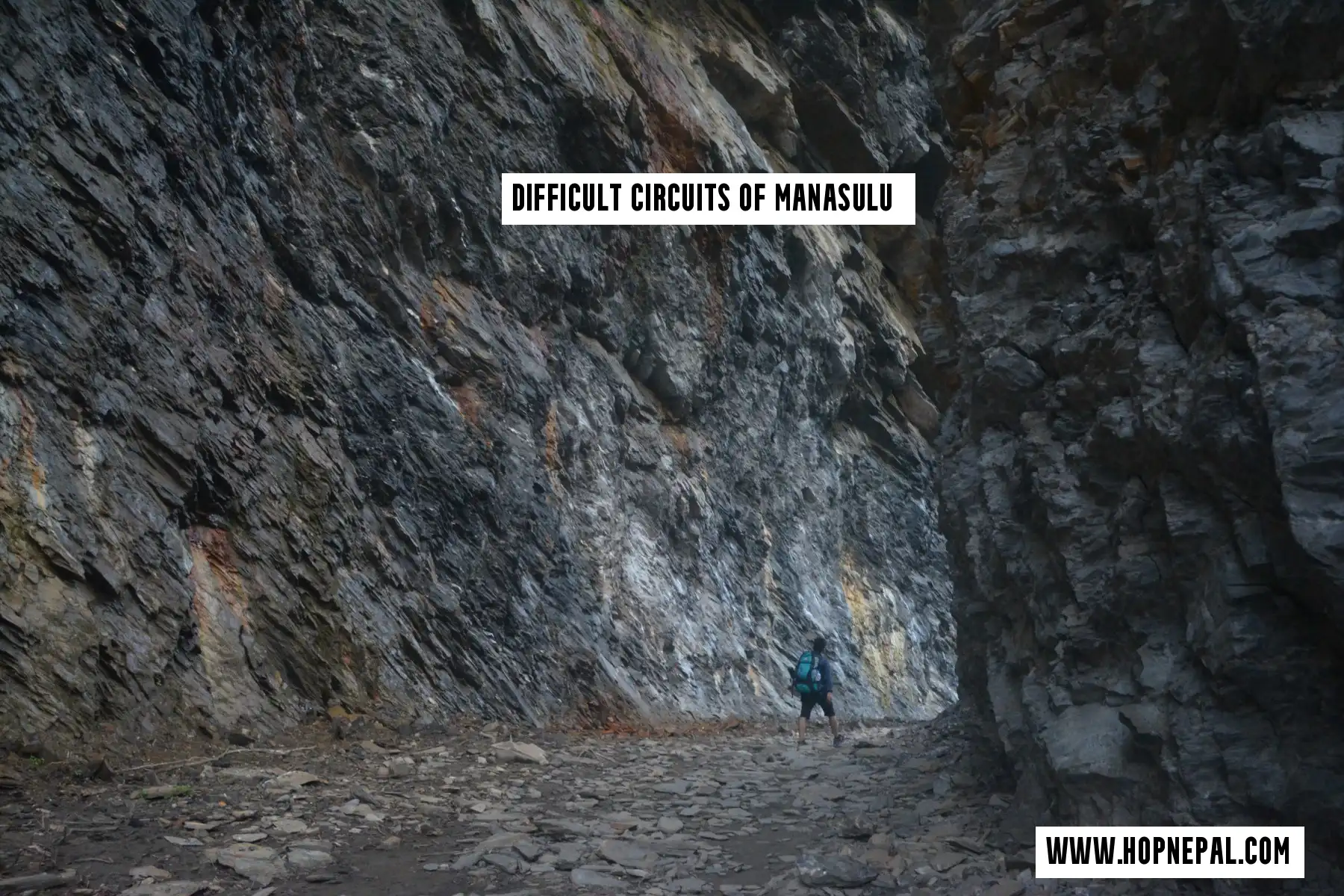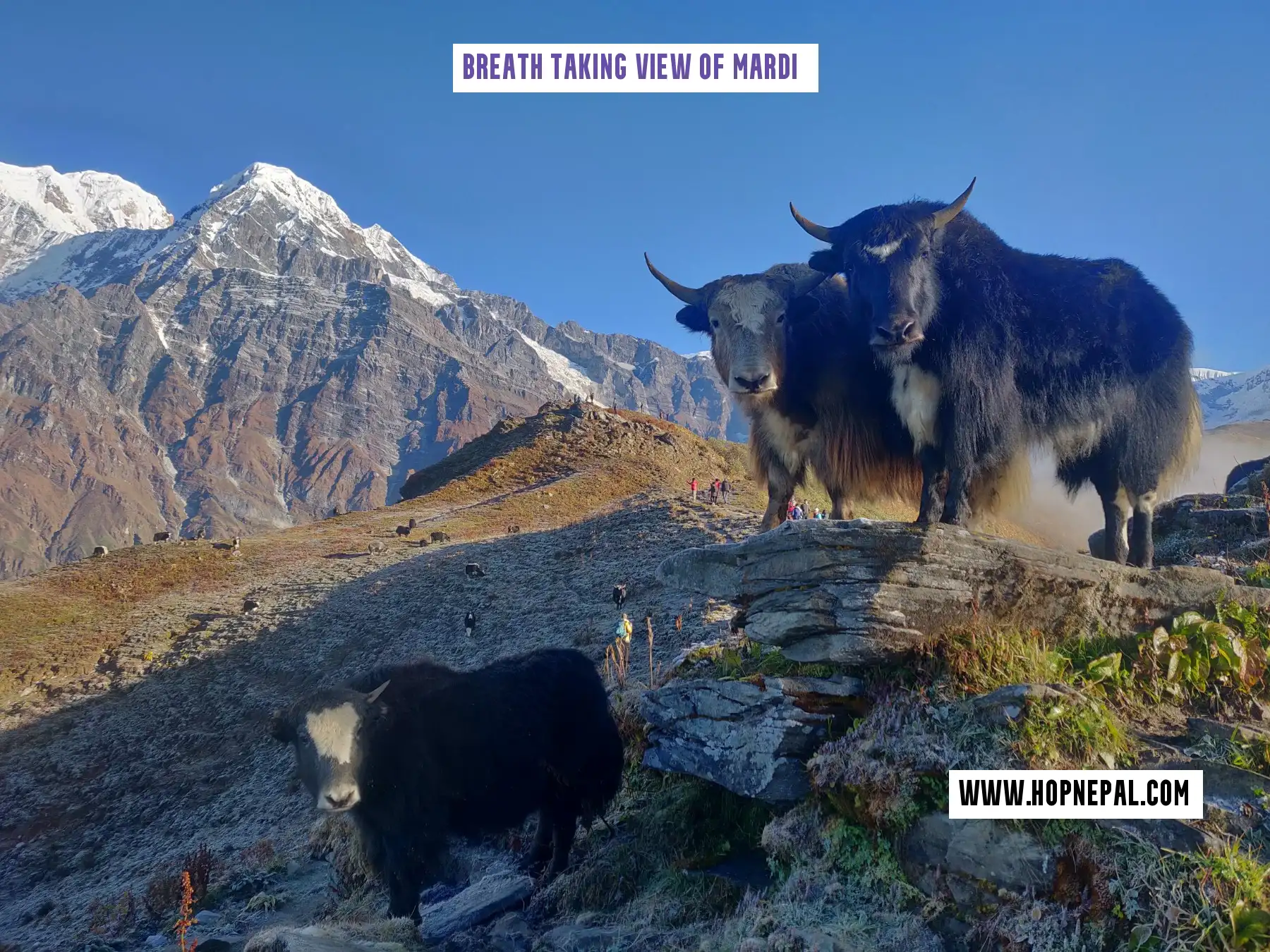Nepal, as we all know, is a landlocked country nestled in the magnificent Himalayan range. This scenic resort, which is bordered to the north by China and to the south, west, and east by India, is full of calm lakes, mountain ranges, and large valleys. Nepal has earned itself the reputation of being amongst the most magnificent trekking locations thanks to the Three Passes Trek, Manaslu Circuit, and Everest Base Camp.
There are many diverse types of treks in Nepal, ranging from mild ones like Dhampus Trek and Rara Lake Trek to more difficult ones like Upper Dolpo Trek and Cho-La Pass Trek. And, with our guide to trekking in Nepal, we've compiled a list of the top options suitable for both novices and experienced trekkers.
Nepal Trekking Guide with 6 Best Treks
Check out our complete guide on trekking in Nepal if you're thinking about going on an exciting trek. Choose one of these six treks after considering the difficulty level, height, route, and other factors.
- Everest Base Camp
- Langtang Valley Trek
- Manaslu Circuit Trek
- Kanchenjunga Circuit Trek
- Mardi Himal Trek
- Annapurna Base Camp Trek
#1. Everest Base Camp Trek
Everest Base Camp Trek, at an elevation of 5,634 meters, allows visitors to marvel at the beauty of the world's highest summit. This strenuous yet exciting hike will reward you with beautiful views of snow-capped mountains and lush foliage.

A trekker at the Everest Base Camp
You must fly from Kathmandu to Lukla to begin the journey. You may see the charm of sites like Tengboche, Kala Pathar, Namche Bazaar, Dingboche, and many more on the trip.
#2. Langtang Valley Trek
Langtang Valley walk is an excellent alternative for novices because it is a shorter trek with a lower altitude and offers fantastic views of Nepal's famous mountains, including Langtang Ri, Annapurna, and Makalu. To begin the hike, take a jeep or cab from Kathmandu to Syabru Besi and relax for the 6-7 hour journey.
The trip takes you through the stunning Langtang Valley, giving you a glimpse into the Tamang community's culture and way of life. The hike allows you to enjoy delightful experiences such as trekking through rhododendron and bamboo forests and to visit old Buddhist sanctuaries such as Langtang Gompa.

Serene Langtang: Nature's harmony in a scenic valley
#3. Manaslu Circuit Trek
Manaslu is the world's eighth highest mountain, reaching its pinnacle at Larkya Pass, from which trekkers may take in spectacular views of the Manaslu mountain. Because the journey passes through restricted areas, it is regarded to be less well-known than other Nepalese treks.

Difficult circuits of Manasulu
This challenging trekking track, which is bordered on the east by Ganesh Himal and on the west by Annapurna, is ideal for adrenaline enthusiasts. Manaslu Circuit Trek, just like Annapurna Circuit Trek, allows visitors to explore six different climate zones. In addition, the path passes through a few villages, stupas, and monasteries. Because this is a challenging trek, you should first read a Nepal Trekking Guide before embarking on your adventure.
#4. Kanchenjunga Circuit Trek
Kanchenjunga, the world's third tallest summit after Everest and K2, is located on the border with Sikkim at an elevation of 28,169 feet. Kanchenjunga Circuit Trek is one of the most challenging walking treks in the world, taking you to the Alpine meadows with temperatures as low as -24°C.
This 15-30 day journey allows you to visit Nepal's eastern Himalayan regions. The Kanchenjunga Conservation Area(KCS) preserves the Kanchenjunga region, and entry requires special KCAP and RAP permits. Because of the high difficulty level of this Nepal trip, extra caution is needed during the expedition. Snoe leopards and Himalayan black bears can also be seen if you're lucky.
 Majestic Kanchenjunga: A peak above the clouds
Majestic Kanchenjunga: A peak above the clouds
#5. Mardi Himal Trek
The Mardi Himal Trek, one of Nepal's shortest and easiest treks, takes you across the Annapurna region of Nepal's Mardi Himal peak, which is located on the shore of Machhapuchhre mountain. You can start this journey from a variety of locales, including Kande, Dhampus Phedi, and Siding while savouring the Annapurna Base Camp Trek.

Breath Taking Mardi
This exciting hike takes you through the enchanting oaks, pine, and rhododendron forests. Mt. Fishtail, Annapurna, and Hinchuli are also available from the trail. The Annapurna Conservation Area Permit(ACAP) and TIMS card are required for the Mardi Himal Trek, as there are for many other treks.
#6. Annapurna Base Camp Trek
The Annapurna Base Camp journey, also known as the Annapurna Sanctuary Walk or ABC trek, is a week-long trek that reaches a maximum altitude of 13,549 feet.
ABC trek, one of Nepal's most well-known trekking routes, takes you through the Annapurna region's rhododendron woods, paddy fields, and natural scenic beauty. Hiking through this region reveals fascinating flora and wildlife as well as breathtaking vistas of the Machhapuchhre, Manaslu, and Dhaulagiri ranges.
What Are The Main Reasons For Trekking In Nepal?
Nepal has some of the best hikes in the world, suitable for both beginners and experienced hikers. Here are a few reasons why Nepal is an ideal location for becoming your nest trekking destination:
- Nepal provides a variety of 3-day treks, ranging from easy to complex.
- Nepal is best known as being the home to eight of the world's fourteen highest mountains.
- The majority of Nepalese treks allow you to see stunning vegetation and fauna.
- During your tour, you'll be able to find healthy meal options.
- One can get a glimpse into Nepalese culture and traditions.
- There are many comfortable lodging/teahouse and camping choices available.
- Nepal is ideal for trekking because of its kind people and low crime rate.
- Trekking paths in Nepal lead to some of the most beautiful lakes in the world.
Best Time For A Trek In Nepal
The two seasons that might make your Himalayan trekking trip truly spectacular are spring and autumn. Because the individual season has its own advantages and disadvantages, this guide to trekking in Nepal will help you decide on the best season for you. Take a look at the season's highlights below:
Spring(March-May)
If you're searching for warmer weather and plenty of flora and fauna, spring is the best time to go trekking in Nepal. The temperature ranges from 16-23 degrees Celsius during this time of the year, resulting in beautiful skies and pleasant weather. You can schedule your trek to Nepal around April or May if you want to do the Everest Base Camp and Annapurna Circuit trek.
Autumn(September-November)
Autumn weather is ideal, with clear skies and temperatures ranging from 22 to 27 degrees Celsius. Summer's end results in a cleaner atmosphere with fewer dust and pollutants. You can get the best experience in the Annapurna region during this season.
Winter(December-February)
Winter in Nepal translates to snow, making for a challenging but exciting trip. The temperature fluctuates from 9 to 12 degrees Celsius during the day, but it might dip to 0 degrees Celsius or lower in the evening. If you enjoy cold weather and snow, winter is an excellent time to embark on a trip, particularly in the Everest region.
Types of Accommodation Available In Nepal
During your Nepal trek, you'll encounter two types of hotels. Here's some essential background on both of them:
#1. Tea House/Lodge Trekking
Tea houses are mostly hotels that provide both lodging and meals. Despite the modest amenities, you will have a comfortable spot to rest and a clean location to eat your meals while on the wall. Cleanrooms with hot showers. Basic bedrooms, a kitchen, a shower space, and a communal eating hall are all included in these stone and timber structures. A tea house will set you back between $250 and $500, with higher prices in high-altitude areas.
#2. Tented/Camping Trekking
This simple method of camping, often known as tented trekking, allows you to stay in a makeshift camp. A guide, Sherpa(local ethnic groups), and team members assist with supplies like tents, dining tents, sleeping mats, and kitchen equipment, among other things. Porters also look after the necessary trekking equipment, such as fuel, food, and other supplies.
Food To Carry For Your Nepal Trek
We've compiled a list of general eating practices that you can adopt for successful hiking in Nepal:
- Begin your daytime with a nourishing meal and avoid coffee, which can cause dehydration.
- To stay energized when trekking, eat carbohydrate-rich cuisine for lunch and dinner.
- Dry fruits such as dates, almonds, walnuts, raisins, and others can provide an energy boost.
- While trekking, hydration is essential; therefore, stay hydrated at all times and consume 5-6 litres of water every day.
- High-sugar foods such as candy, energy bars, chocolates, and cream biscuits should be avoided.
- Carry no alcoholic beverages with you because they might cause dehydration, which can lead to Acute Mountain Sickness(AMS).
- Protein-rich diets should be avoided in higher altitude zones since they take longer to digest.
Physical Fitness
You must be physically fit to effectively complete a trip, whether it be a short 4-day Poon Hill trek or a 20-day long Everest Base Camp Trek. As a result, two months before your last journey in Nepal, it is recommended that you adhere to a stringent fitness regimen. You might begin by walking or jogging for 6-7 kilometres per day. SWimming, step climbing, squats, and riding, among other activities, will adequately prepare you for even the most arduous high-altitude excursions.
Trekking Tips For Nepal
Read these valuable recommendations for a smooth walk before travelling to Nepal for an adventure trekking experience:
- Instead of travelling alone, join a group or hire a guide.
- Maintain a fitness routine for at least two months before your expedition
- Vaccinations for Tetanus, Diphtheria, Hepatitis A, Typhoid, and other diseases are recommended.
- Learn everything you can about the trip you want to go on.
- Be mindful of altitude-related ailments and learn how to treat them using local remedies.
- If at all feasible, bring a portable water filter.
- Learn everything you can about Acute Mountain Sickness.
- Don't overpack and bring only what you need.
- Bring extra passport-size pictures and your confirmation of identity.
- Always keep a sufficient amount of cash with you.
- Make sure you're ready for any weather or trail conditions.
- Always review the weather forecast before going on a hike.
- Bring trekking shoes that are comfortable and have appropriate soles.
- Remember to bring your TIMS card, permits, and park fees.
- Carry a sufficient supply of both general and prescription drugs.

